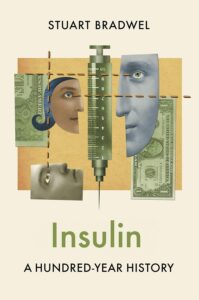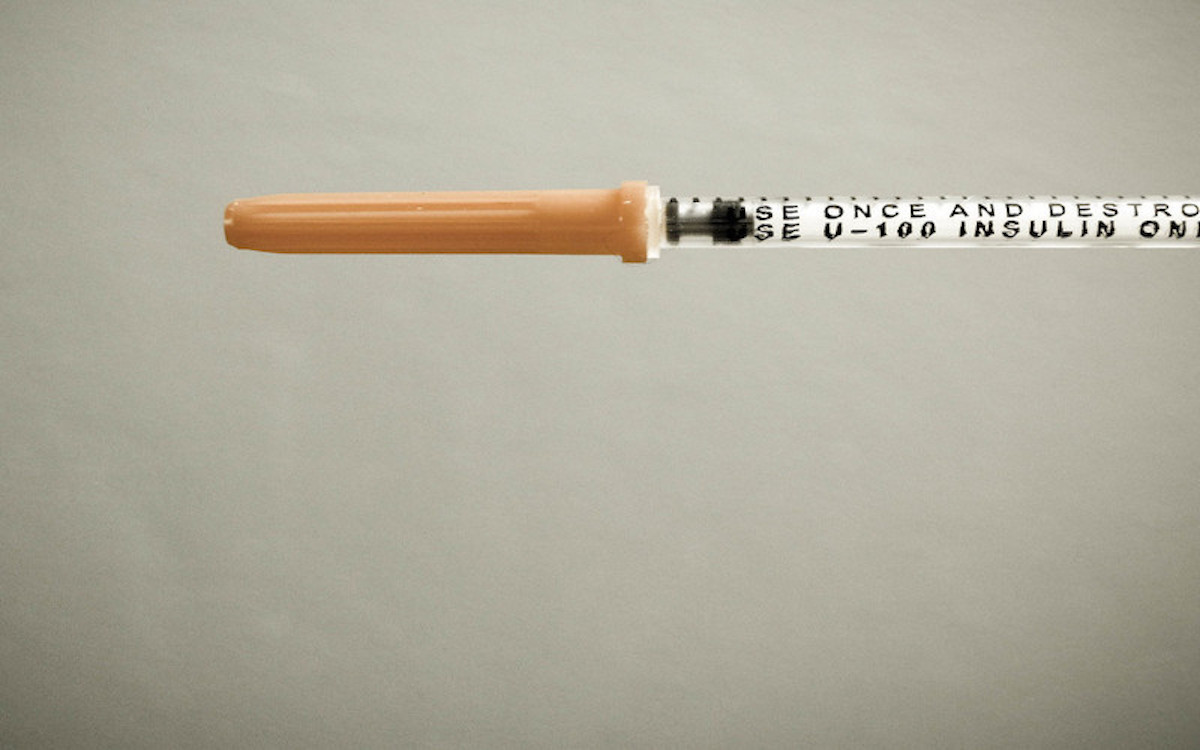In 2017, almost a hundred years after insulin was ‘defensively’ patented for the express purpose of preventing unethical profiteering, Alec Smith was found dead in his Minneapolis home at only 26 years old. He had been diagnosed with T1DM two years previously, but seemed to have adapted well to the demands of insulin treatment. What had gone wrong? Smith’s great misfortune was that he had been lucky enough to be born a citizen of Earth’s wealthiest nation. Unlike most industrialized countries with the finances to do so, the United States offers no universal health coverage to its population. When he ran out of insulin and could afford no more, he was simply left to die.
This tragedy was far from unforeseeable. While a small number of Americans are able to access subsidized healthcare through government programs such as Medicare and Medicaid, almost all working- age people rely on a fully privatized, insurance-based marketplace to meet their medical needs. Those fortunate enough to have stable, full-time employment often receive health insurance as a perk of the job, but this leaves many to fall through the cracks.
When he was first diagnosed in 2015, Smith was registered with the insurance that his mother held through work. According to the terms of the 2010 Affordable Care Act (ACA), this provided him with coverage until his twenty- sixth birthday. Unfortunately, he was already approaching the cut-off date. In 2017, he “aged out,” and was left to fend for himself.
Smith did not live in poverty. He worked as a manager at an independent restaurant, and received a salary of around $35,000 per year: not an extravagant income by any means, but comfortable enough for a single man. Losing his health insurance, however, was devastating. As a small business, his employer offered no coverage, but he was paid too much to qualify for Medicaid assistance. His only options were to either take out an individual health insurance policy, or to go without and pay for any costs up front.
It quickly became obvious that for Smith to maintain the level of care he had enjoyed on his mother’s insurance, even the most “affordable” policy would involve crippling costs. In addition to a $450 per month premium, he would be expected to pay full price for his supplies until he met an annual deductible of $7,600. Even after all of that, he would still be liable for smaller ‘co- pay’ fees every time he picked up a prescription until he met his “out of pocket maximum.” In short, Smith was looking at a potential yearly bill of at least $13,000 – over a third of his total income.
It must have seemed absurd. For only $5,400 per year, he could buy the right to spend up to another $7,600 on medical care alone, and his other expenses – rent, utilities, food, etc. – had not gone anywhere. At work he had heard talk that the owners planned to open branches at several new locations, and, as the ACA had also stipulated that companies with more than fifty employees should offer health coverage to at least 95% of their full-time workforce or face penalty fines, he reasoned that, as a manager, he would almost certainly be offered insurance when the move went through.
After his diagnosis, Smith remembered being shocked at an initial pharmacy bill of around $500 for a month’s worth of insulin and supplies. This was a lot, but it must have seemed manageable. It was, after all, only $50 more than he would be paying in premiums if he took out an individual policy. His mother later remembered him telling her how he planned to go without insurance, asking “how bad could it be?”
The answer, as it turned out, was very. Insulin is now one of the single most expensive substances on the planet. When he went to the pharmacy to pick up his prescription, he was told that a single month of supplies would set him back $1,300 – quite a sum for a substance that one recent article suggested could be produced – profitably (!) – at an average cost of only $133 per user per year.
Smith was shocked. He had, with some justification, never imagined just how expensive such an apparently ubiquitous thing might have become. He simply did not have the money that was being asked of him and, lacking insurance, was not eligible for any of the commercial discount schemes that might have reduced his immediate costs, however modestly. In the end, he left with only a fraction of what he needed to effectively manage his condition.
With little other option he began to ration what little he could afford, injecting as little as he felt he could get away with while also radically cutting his carbohydrate intake. If he could buy enough time to reach his next pay packet, he must have thought, at least he could replenish his supplies and take stock of the situation. This decision, however, proved to be disastrous. Smith’s strategy was a desperate gamble, and, as it turned out, a fatal one. Only a month after being unceremoniously dumped from his mother’s insurance policy, he fell into a coma and died of DKA. Damningly, his experience was far from unique.
When Allen Hood, for example, turned eighteen, he was rejected by Medicaid. In the end, he also turned to insulin rationing. Two years later his mother came home to find him on the floor, unconscious. Cruelly, she was forced to watch for over two hours, only days before Mother’s Day, as paramedics tried in vain to save her son.
Jada Baldwin was also uninsured. When she was taken to hospital with DKA in 2019, she admitted that she had been unable to give herself insulin for three whole weeks (!) prior to her admission. She was sent home, and died eight days later.
After he lost his job in November 2017, Jesse Lutgen’s health insurance went with it. The most ‘affordable’ individual plan he could find at short notice came with an incredible $10,000 deductible so, like Smith, he tried to pay out of pocket. He was found dead in February the following year.
These stories represent only a tiny fraction of those who have died for want of a vial that, twenty-five years ago, could be bought for less than the cost of a round of drinks at most mid- range bars. At the time of writing, typing “insulin” into the fundraising website GoFundMe returns countless results, many of them last-ditch attempts to acquire vital supplies from uninsured (and underinsured) Americans. Make no mistake, this is a crisis.
It is not, however, by any means a uniquely American one. Global diabetes rates are increasing rapidly, and demand for insulin along with them. As the planet’s richest country, however, the United States makes for a telling case study. The argument that the resources or infrastructure to provide universal health coverage is simply not there holds little water. If the political will to do so existed, the authorities in Washington D.C. could end the crisis for their constituents almost overnight several times over.
*
Whatever the “type,” diabetes is a dangerous condition that can lead to disabling and even potentially fatal long-term complications. In reality, however, it need not – with enough insulin it can be effectively controlled. People living with diabetes do, on average, live slightly shorter lives than the general population. Nonetheless, their life expectancy is now substantially greater than it was in the mid-twentieth century, and there is no reason to believe that this gap might not close further in the future, should we allow it to.
Over the last hundred years, diabetes should have lost much of its bite. With effective treatment it is an unpleasant inconvenience and often a chore to deal with, but it should be little more than that. However, for many it remains an existential burden, and it continues to be recognized as one of the leading causes of death worldwide. This framing, however, is somewhat misleading. When people die after rationing insulin, ‘diabetes’ is usually listed as the cause. When they develop avoidable complications that end up killing them, the same thing happens. It is true that in most of these cases the condition has physically contributed to their deaths, but many would have survived had they been able to access the supplies that they needed. Often, they did not die ‘of diabetes’, but rather of inadequate access to healthcare. The problem here is political, not biological.
Those who argue against universal – or at least more affordable – healthcare usually do so out of an ostensible commitment to free market economics. On paper, the free market is one in which private companies can set whatever price they choose for their products, while individuals are able to freely decide where to buy what they need. In theory, this leads to a community of rational consumers who continuously seek out the best deals, encouraging businesses to undercut one another to attract customers. This, so the thinking goes, leads to affordable prices and greater efficiency.
Over the last hundred years, diabetes should have lost much of its bite. With effective treatment it is an unpleasant inconvenience and often a chore to deal with, but it should be little more than that.This utopian, self-regulating free market is, of course, nonsense, and insulin serves as a perfect example of why. Those who use it, and especially those with T1DM, are a captive audience. They cannot choose to go without. Furthermore, global production is dominated by only three major companies – Eli Lilly, Novo Nordisk, and Sanofi. In practice, these manufacturers hold a near-monopoly, but they rarely undercut one another as the theory suggests they should. Instead, they do the opposite, forming an effective cartel that is able to maintain artificially high prices. If their customers have no choice but to buy their products, why ruin the party by competing when they can work together to guarantee one another’s profits?
There are some ways in which insulin can be acquired more affordably. Doctors can pass on “samples” to their patients, for example, which of course also function to advertise certain branded products. Sometimes “free clinics” can help in the short term, and pharmacy coupons or the so-called “co-pay” cards issued by manufacturers might also reduce immediate costs.
None of these, however, are real solutions, and they tend to come with a long list of terms and conditions. ‘Co-pay’ cards, for example, are often not available to the uninsured, and even where they are, the holes in the system become rapidly apparent.
During the COVID-19 pandemic, for example, Eli Lilly announced that it would make a card capping monthly insulin ‘co-pays’ at $35 available to those without insurance. Should someone acquire one of these cards and have it accepted by a pharmacy, neither of which is a given, they might still be expected to pay hundreds or even thousands of dollars per year for their supplies. There is also a $7,500 annual limit, based on Lilly’s ‘contributions’ towards the still-extortionate list price with each purchase. In practice, this means that virtually nobody is able to get everything they need at the reduced price.
“Co-pay” cards are also never issued simply out of goodwill. They also function as effective marketing schemes that encourage people to buy certain products – and still at a significantly inflated cost. They may save money for individuals in the short term, but manufacturers more than recoup their costs in the process, and never fail to cynically use the opportunity to considerable PR effect by highlighting how much they apparently care. This is not the only way companies work to repackage profit-oriented policies as charitable benevolence.
Eli Lilly, Sanofi, and Novo Nordisk each, on paper, donate vast quantities of insulin to those in need through what are known as patient assistance programs (PAPs). Each company has its own with slightly different small print, but they operate similarly in practice and provide one avenue through which some uninsured people who meet certain criteria can receive their prescriptions free of charge, apparently direct from the manufacturer. This sounds very generous on the face of it, and undoubtedly some people have benefited from insulin acquired through PAPs. We should, however, be very careful about attributing any social consciousness to profit-seeking enterprises. No private insulin manufacturer makes its products for the good of humanity, but rather to secure the greatest possible return on its investment – that has been clear since the 1920s. PAPs are no exception. In fact, they represent a very clever piece of misdirection indeed.
When someone receives insulin from, say, Lilly Cares – Eli Lilly’s PAP – they are not actually getting it from Eli Lilly the manufacturer. Instead, it comes from the Lilly Cares Foundation, an affiliated, but ostensibly independent, non- profit organization. Eli Lilly proper provides thousands of dollars’ worth of insulin to Lilly Cares, which then distributes it to successful applicants. Why the middleman? The answer should surprise no one. When Eli Lilly “donates” insulin to Lilly Cares, they are able to designate this as a charitable contribution. This “donation” can then be claimed back as tax relief at “fair market value” – a value which is determined entirely by the manufacturer cartel of which Eli Lilly is a controlling member!
Insulin may be sold for far more than it costs to produce, but its “value” here is determined wholly by its list price. As prices go up, these generously minded companies can claim back ever more from the government, even while their expenses remain stable. The system is framed as manufacturers doing people a favor, but in reality, the function of PAPs is clear. This is a clever system of tax avoidance dressed up as humanitarianism.
__________________________________

Excerpted from Stuart Bradwel’s Insulin: A Hundred Year History. Used with permission of the publisher, Polity Press. Copyright 2023 by Stuart Branwel.



